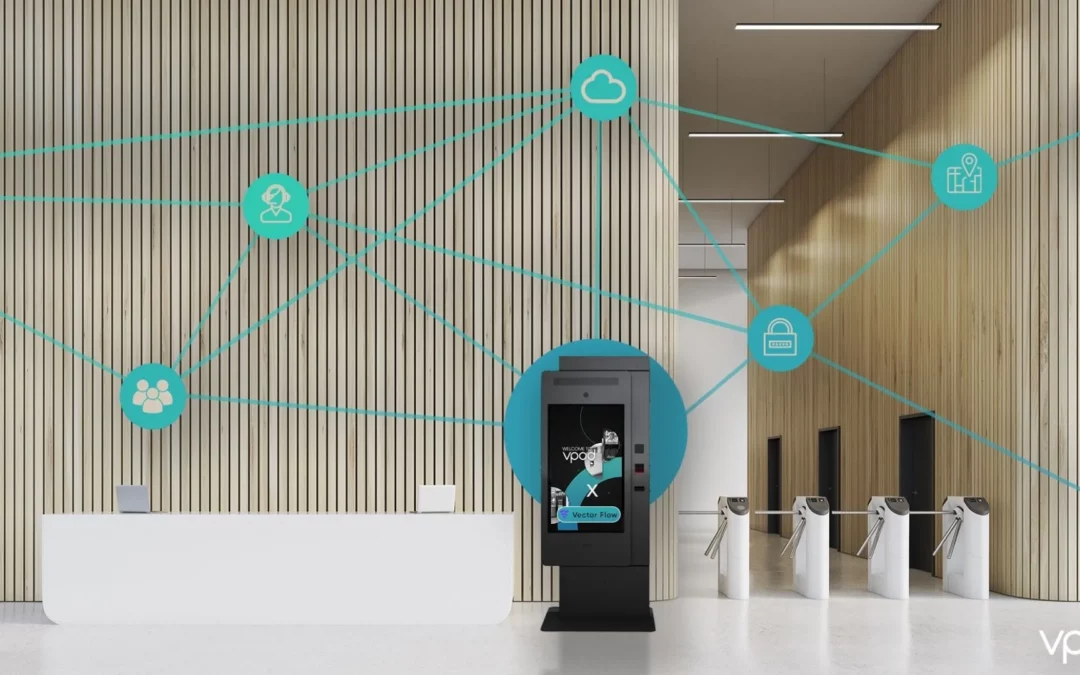Our take on Microsoft’s Annual Work Trend Index Report & thought leadership on the smart workplace.
Earlier this Spring, Microsoft published their Annual Work Trend Index Report, giving a detailed insight into workplace trends and what a post-pandemic smart workplace looks like.
After a year unlike any other, it comes as a little surprise that the year 2020 has completely changed the landscape of work and the workplace forever.
As we re-emerge from a year spent facing challenges and lockdowns, every organisation across the globe is making important decisions on how they are going to enter the future workplace and how their people will thrive in it.
In today’s blog, we will cover:
- Why are these trends important?
- What is a smart workplace?
- 6 Trends of the future smart workplace
- How you can support your employees
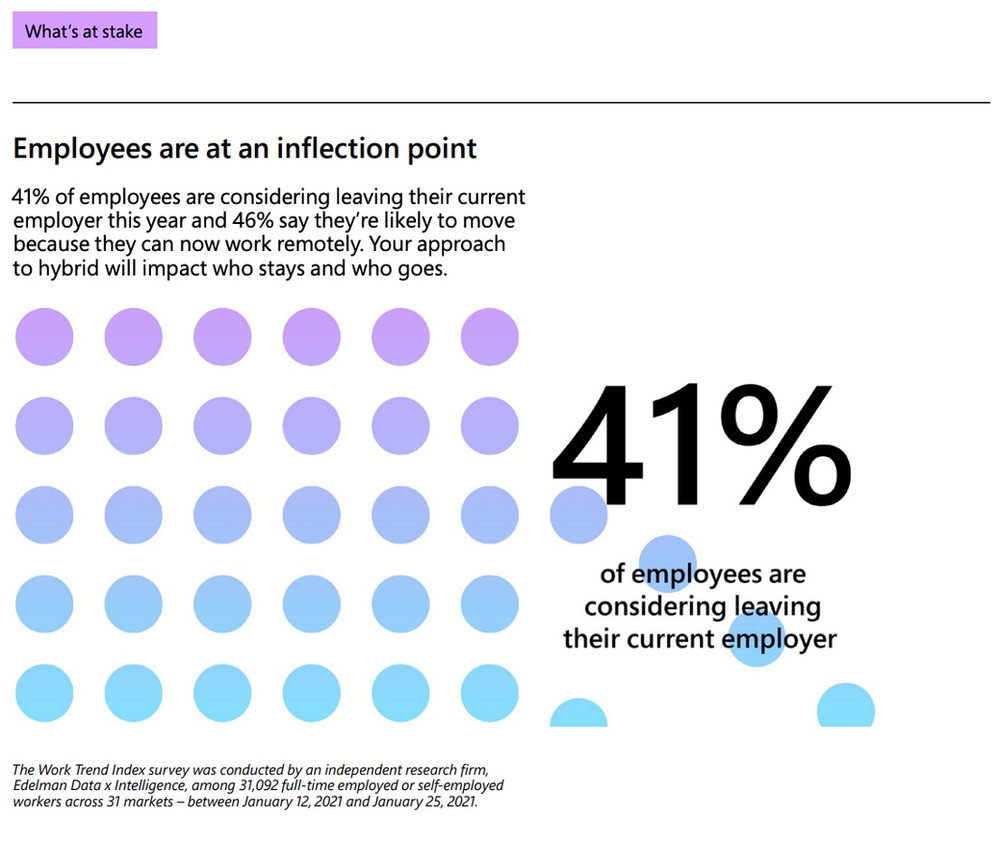
Why are these trends of smart workplace important?
The survey covers employee management and impact perspectives in detail. It also covers the startling fact that of the people surveyed, 41% of employees are considering moving or leaving their employer if they do not offer a hybrid workplace. The stakes are high. If businesses get this wrong, they’ll lose people in droves.
We’ve summarised Microsoft’s report below and extracted information that we at Vpod find crucial for businesses that are re-strategising to move forward in 2021. We hope that the insight it provides encourages you to reflect on your current workplace, as well as the one you want to return to in the coming months.
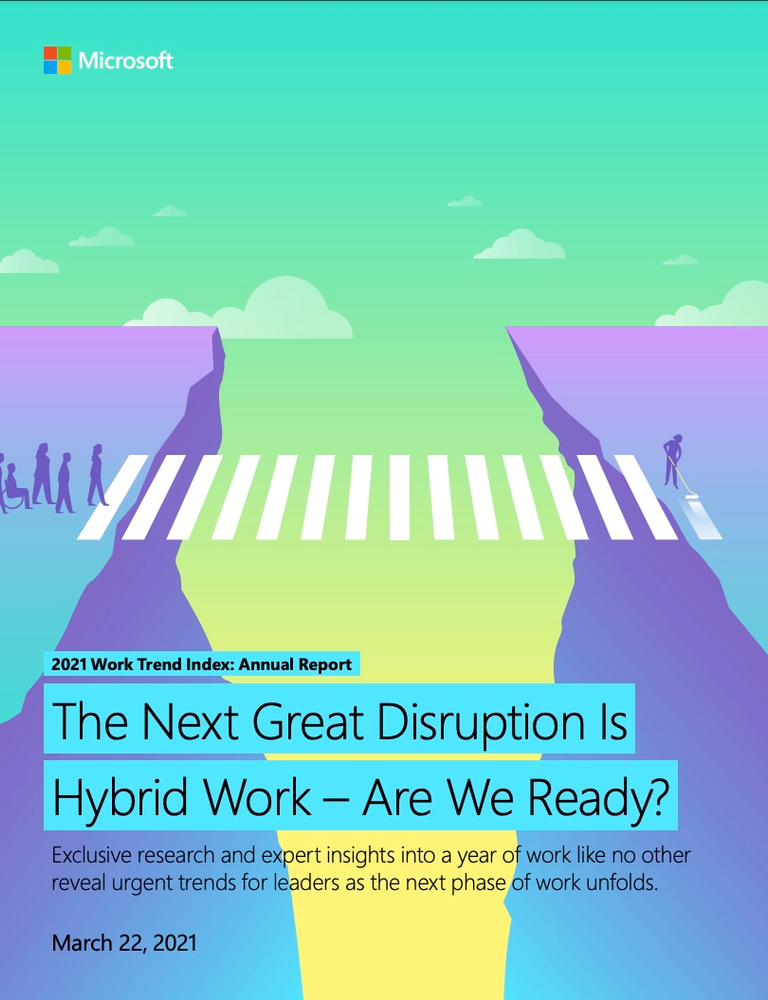
What is a Smart Workplace?
A smart workplace, under the drive of technology and the hybrid working model, is a workspace that uses technology to connect and engage with its employees.
The new hybrid, smart workplace will find employees seeking the benefit of working between both worlds – remotely, from the comforts of their home and back in the office for collaboration time with their teams.
Employers will have to accommodate hybrid working and support their people with the right tools, environment and culture in order to retain their talent.
6 Trends of the future smart workplace
1. Flexibility in the workplace
“Employee expectations are changing, and we will need to define productivity much more broadly — inclusive of collaboration, learning, and well-being to drive career advancement for every worker.”
Employees want to control where, when and how they work. They’ll expect their employer to be open to accommodating these options open for them. They’ll also need the right ‘home office’ tools to work from home as technical difficulties can severely impact productivity and their ability to contribute to important meetings or carry out daily tasks.
66 % of business decision-makers are considering redesigning physical spaces to better accommodate hybrid work environments.
In order for the office to remain a relevant place post-pandemic, workers expect it to bridge a gap between the physical and digital world for their specific role and also for the needs of their team. Offices should become a place that is compelling and energetic. They must create that sense of community – where people can huddle, bounce ideas off of each other and collaborate in ways they are unable to when working from home. They must also come equipped with technology that enables efficiency and productivity; technology that is capable of digitising workflows and that is intuitive to their specific needs.
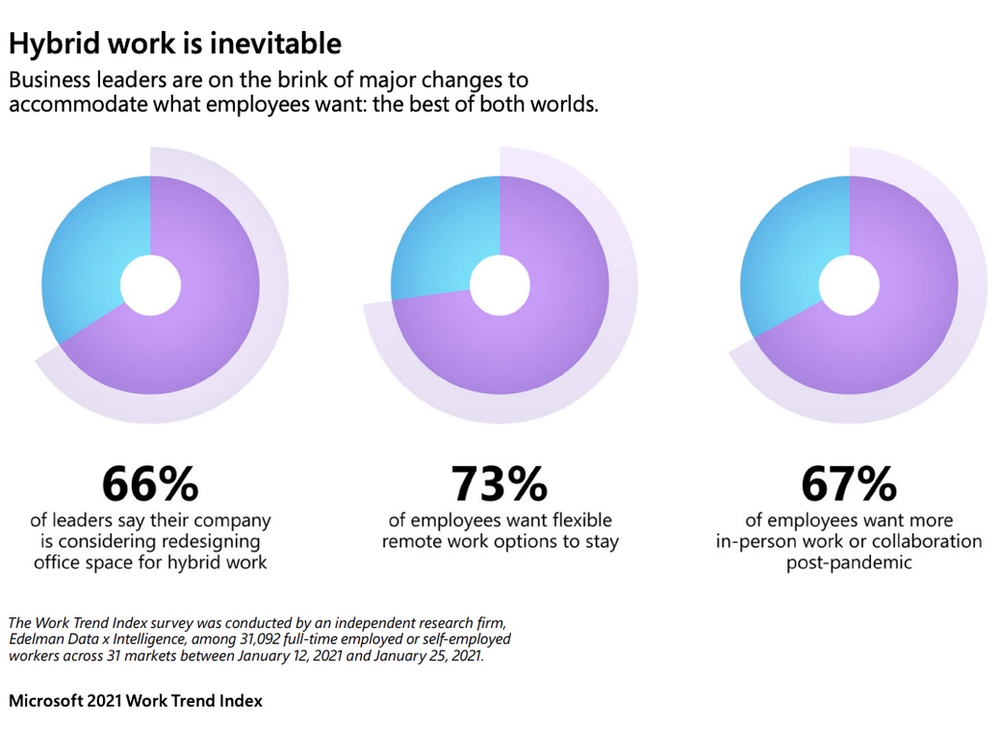

2. The importance of the relationship with employees
During a difficult year, where colleagues mostly connected virtually, a more ‘human’ side of work began to reveal itself as home life started to show itself in work life.
Whether it was crying babies, barking dogs or spouses in the background; colleagues have virtually been able to truly get to know each other on a personal basis. This allows the future smart workplace to become more authentic.
“Leaders and teammates should be aware and ensure their workplace interactions encourage authenticity among all groups, especially in hybrid environments.”
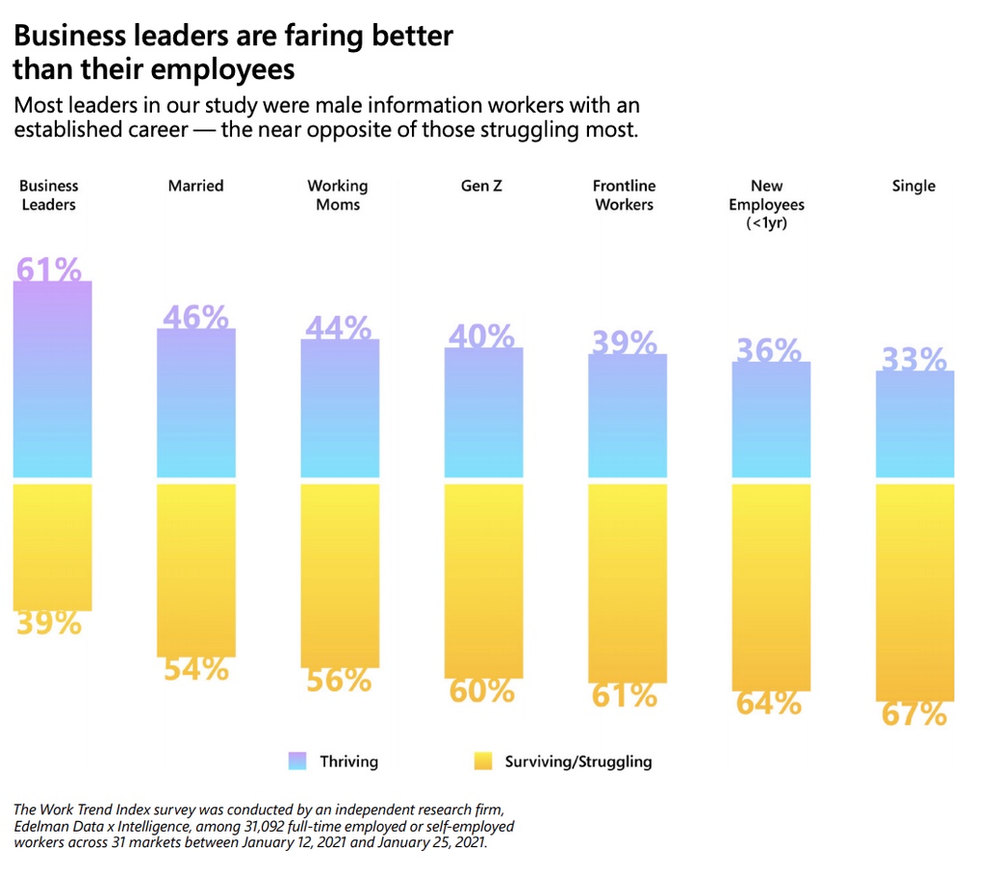
3. Workplace psychological safety
High productivity is masking an exhausted workforce.
Psychological safety has become more than crucial in the future smart workplace. Of those surveyed, 54% of respondents reported feeling overworked and 39% of respondents reported feeling exhausted over the past 12 months.
A direct implication of learning how to work remotely and during a global pandemic is a digitally intensive workload. The inability to collaborate in person meant that people spent more time on video calls, document share and chat apps so that they could touch base with colleagues, have virtual meetings and have ad-hoc calls to “keep up” with their workload. This marked a shift towards a more intense workday and the expectations on employees increased because of it.
Nearly 1 in 5 global survey respondents say their employer doesn’t care about their work-life balance:
“According to Dr. Mary Donohue, Founder of The Digital Wellness Center, the exhaustion we’re feeling can be blamed on the speed and urgency of virtual work. In-person conversations give our brains a chance to assess things like tone, social cues, and body language to make meaning. But technology can create digital static: “the gap between what you try to communicate online and what the person receiving the message understands.” And as that digital static increases, so does employee fatigue, anxiety, and burnout rates — while motivation and engagement decline.”
4. The new employees – Gen Z
The report has also pointed out the possible disconnection between employers and Gen Z in the future smart workplace.
Business leaders may be out of touch with what their employees need as Gen Z is struggling more than other generations.
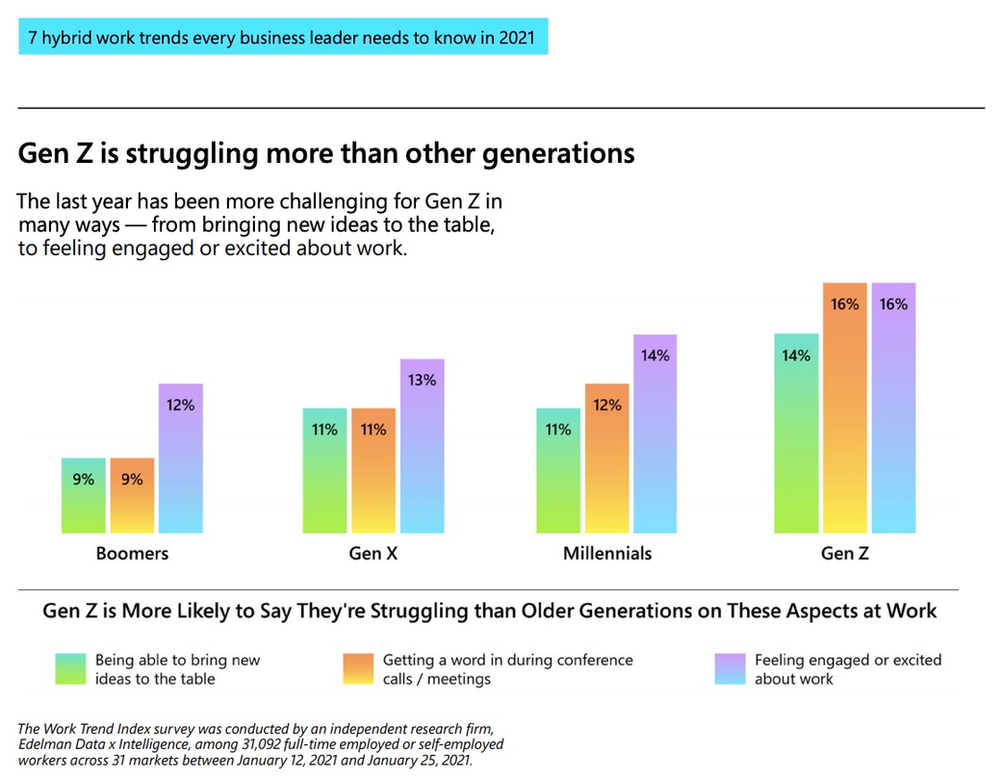
Microsoft’s research shows that 61% of leaders indicated that they felt as though they’ve been “thriving” in this shift to hybrid working. “They also reported stronger relationships with colleagues and leadership and a higher likelihood of taking all or more than their allotted vacation days.” From those surveyed, business leaders were also more likely to be Millennials or Gen-X, male, information workers, and farther along in their careers.
Employees, without decision-making authority, on the other hand, were reported to have “struggled” and felt ‘disconnected’ from business leaders over the past year. Gen-Z, who are more likely to be in earlier stages of their careers, also reported more difficulty feeling engaged or excited about work, speaking up during meetings, and bringing new ideas to the table compared to other generations.
Because of restrictions, important work-rites-of-passage such as induction days, training and networking events have been cancelled or moved to online measures. This has completely changed the onboarding experience and has made making those initial, crucial, in-person first connections impossible.
Though restrictions will ease and eventually the pandemic will subside, it is very likely that remote work is here to stay. Those new to the workforce will face the challenge of feeling included at work and physically part of a team. “Now more than ever, people are expecting their employers and leaders to empathise with their unique challenges.”
It is crucial that our Gen-Z employees are not overlooked. Their contributions to the workforce are hugely important. “They offer fresh perspectives and challenge the status quo. Their contributions are critical, and as the first generation to enter the workforce in a completely remote environment on a widespread basis, their experience will set expectations and attitudes toward work moving forward. Ensuring that Gen-Z feels a sense of purpose and wellbeing is an urgent business imperative in the shift to hybrid.”
Generation Z grew up as the digital era emerged. However, that doesn’t mean to say they know how to adapt to it comfortably – in fact, the report shows the contrary. Our Gen-Z is not adjusting to the digital workload. What this group wants is a workplace that responds instantly to their needs, and on-demand services that are intuitive, rather than the “container” that many offices are today.
5. The new purpose of the smart workplace – collaborative and innovative
Teams are more siloed in a digital work world
The shift to remote work saw our wider networks shrink as we clung closer to our immediate contacts for support. Our connection to our broader network is significantly important as they impact our productivity and innovation. Whether it’s having a strategic conversation, brainstorming with others, proposing new ideas or learning about a different area of the business; having that broader network of people deepens relationships and can help people thrive in their workplace.
“Bumping into people in the office and grabbing lunch together may seem unrelated to the success of the organisation, but they’re actually important moments where people get to know one another and build social capital,” says Microsoft Senior Principal Researcher Dr. Nancy Baym. “They build trust, they discover common interests they didn’t know they had, and they spark ideas and conversations.”
6. The authentic self and well-being.
According to Microsoft’s report and survey, authenticity will spur productivity and well-being.
As employees and colleagues huddled together during the difficult days of the pandemic, battling through uncertainties, fatigue and personal life – they got to know each other closely. Microsoft reports that 1 in 6 respondents shared tears with a co-worker. More genuine interactions with coworkers may help foster a workplace where people feel more comfortable being themselves in the workplace.
“While we hope the next phase of work will relieve pressure from those in the most impacted industries — especially frontline workers — and bring more balance to the work-life collision many of us are feeling, business leaders, have an opportunity to encourage this authenticity as an antidote to isolation. These more personal interactions have the power to drive inclusion, productivity, and innovation for years to come.”
Supporting employees in the smart workplace
The 6 trends have driven the shift towards the building having to work for its employees and how they want to use it, not just exist and actively hinder productivity, as it does today.
With this in mind, we’ve pioneered touchless express check-in, and with our partners, we are delivering services that are intuitive to create a smart workplace that works for your employee.
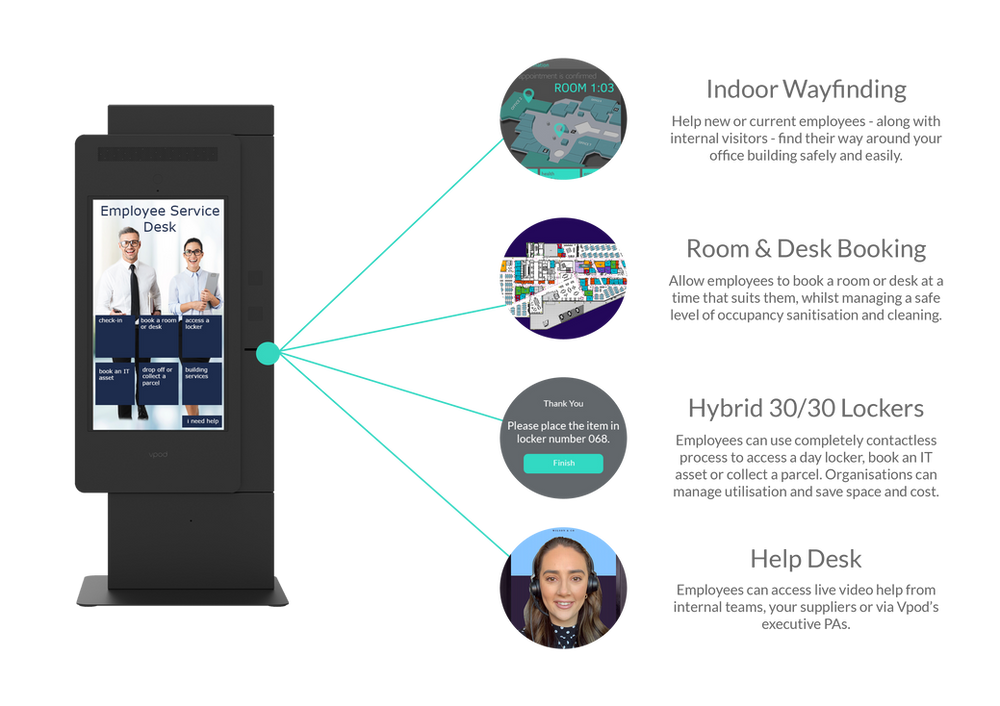
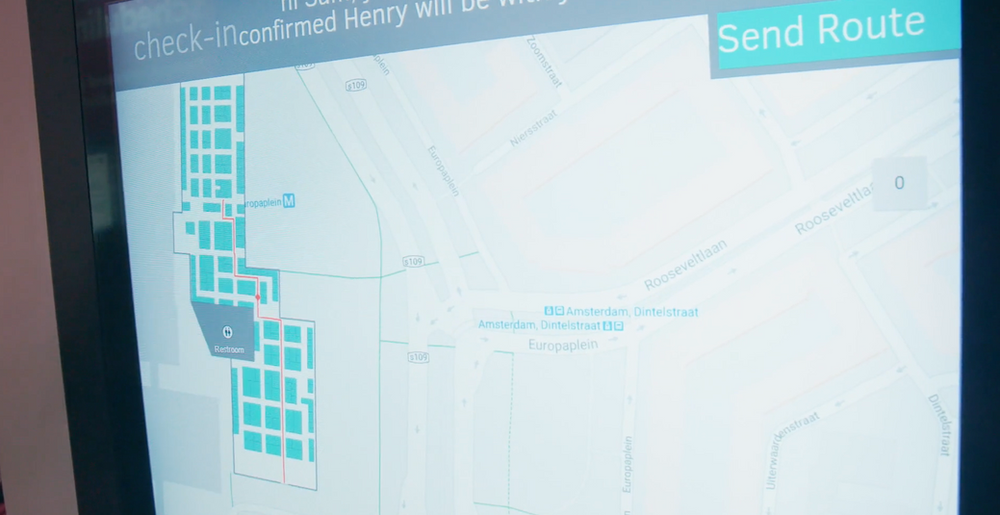
1. Wayfinding: Your employees will never get lost again!
Wayfinding for visiting employees or new starters. The new hybrid working population will not know the building or where everything is like resident employees do. They can easily get lost or just not feel like they belong and consider joining the 41% looking for a new employer. Needless to say, the ability to find key resources in a strange building is key to that feeling of belonging and well-being.
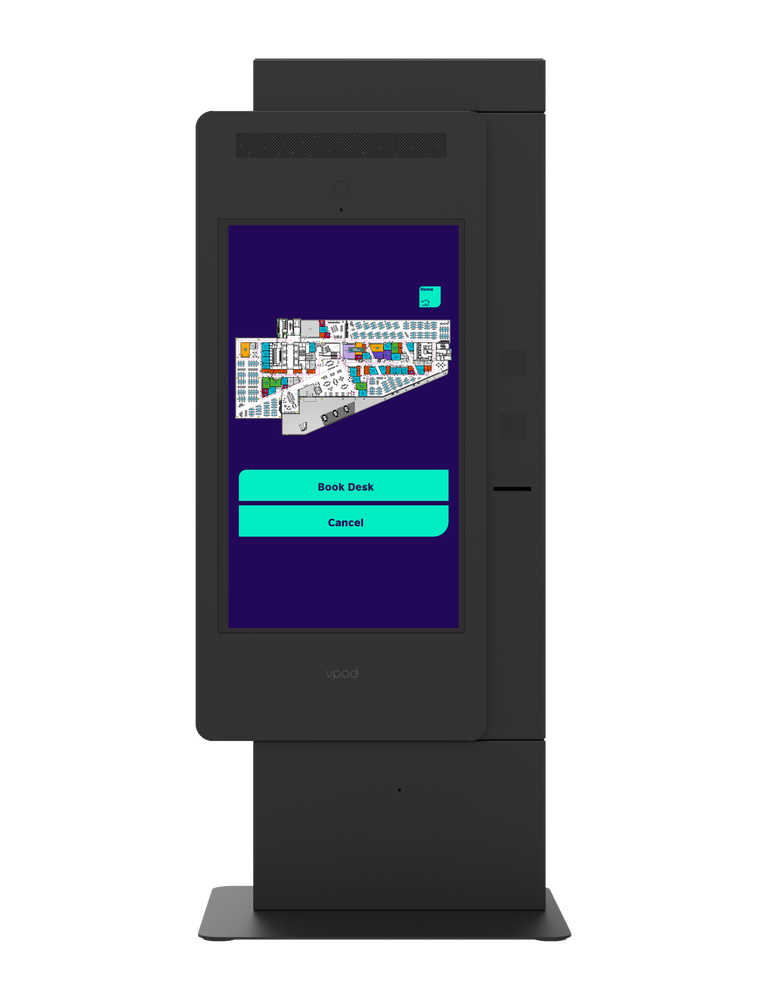
2. Desk booking on demand
Desk Booking on demand is also a helpful feature to create a smart workplace. If an individual forgets to book prior to arriving, they can be assured that they’ll be able to find a desk space that is vacant as well as sanitised and complies with government distancing regulations.
3. Smart lockers
The smart locker solutions for your smart workplace can:
- Open when you approach with a valid QR code or mobile device
- Cater for any of your needs, pick up post, drop off a laptop for repair, or simply store your kit while you go to lunch
- Provisioned near your chosen desk or workspace
- The new smart lockers remove the pain of keys, cards, or battery-operated devices and combine all the software workflows to support:
- IT and asset management with a chain of custody and control
- 24/7 parcel and post pick up, again with full digital process control to support touchless interaction and digital notifications.
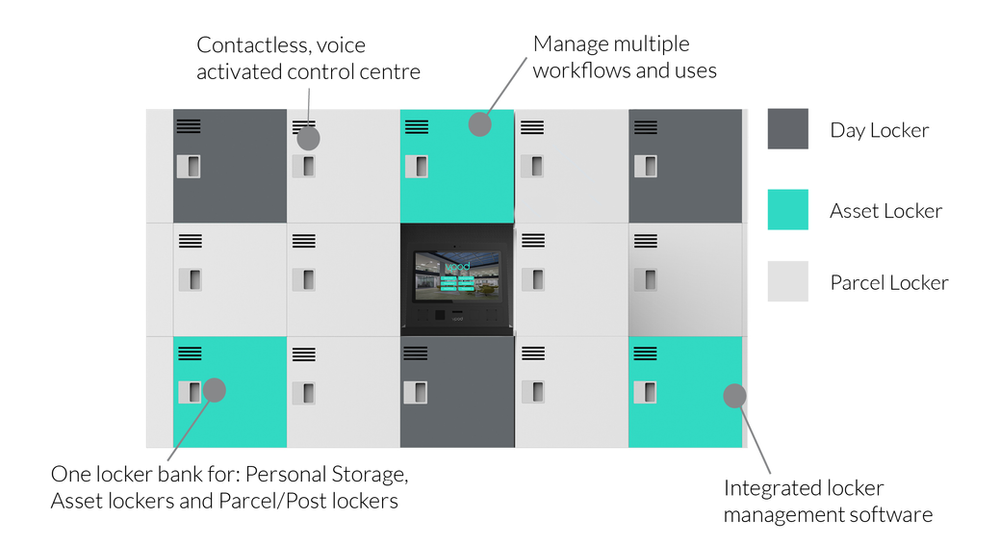
This removes the pain points of carrying day luggage around, searching for posts, or important documents to sign, or connecting with IT to get your new laptop.
Equally, for the organisation, the Hybrid locker 30/30 range saves 30% on the lockers you need, just by making them run more efficiently. It also saves 30% of that expensive furnished office space that can be better purposed as a huddle or workspace for your people.
Are you interested in how we can help you create a smart workplace? Contact us


